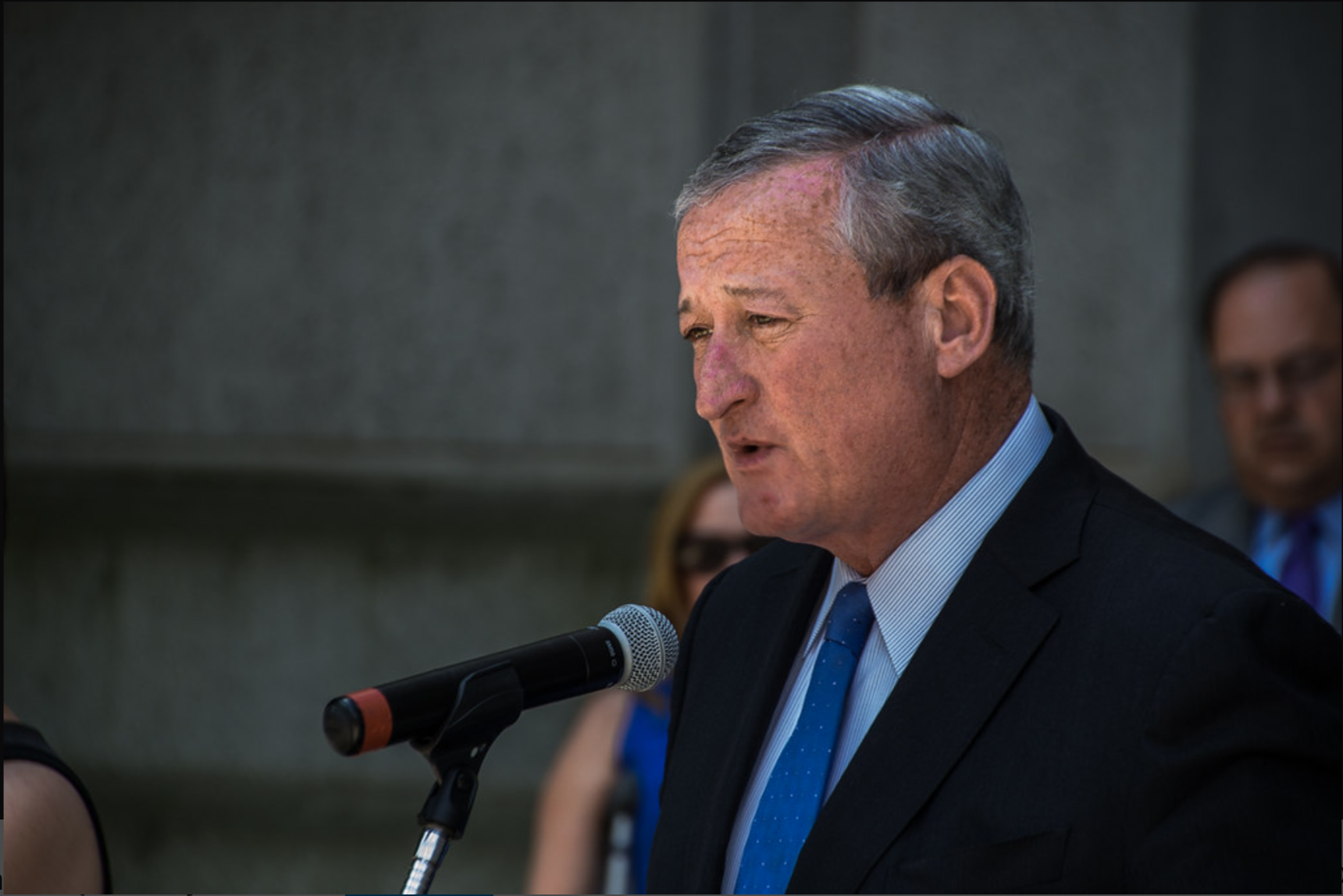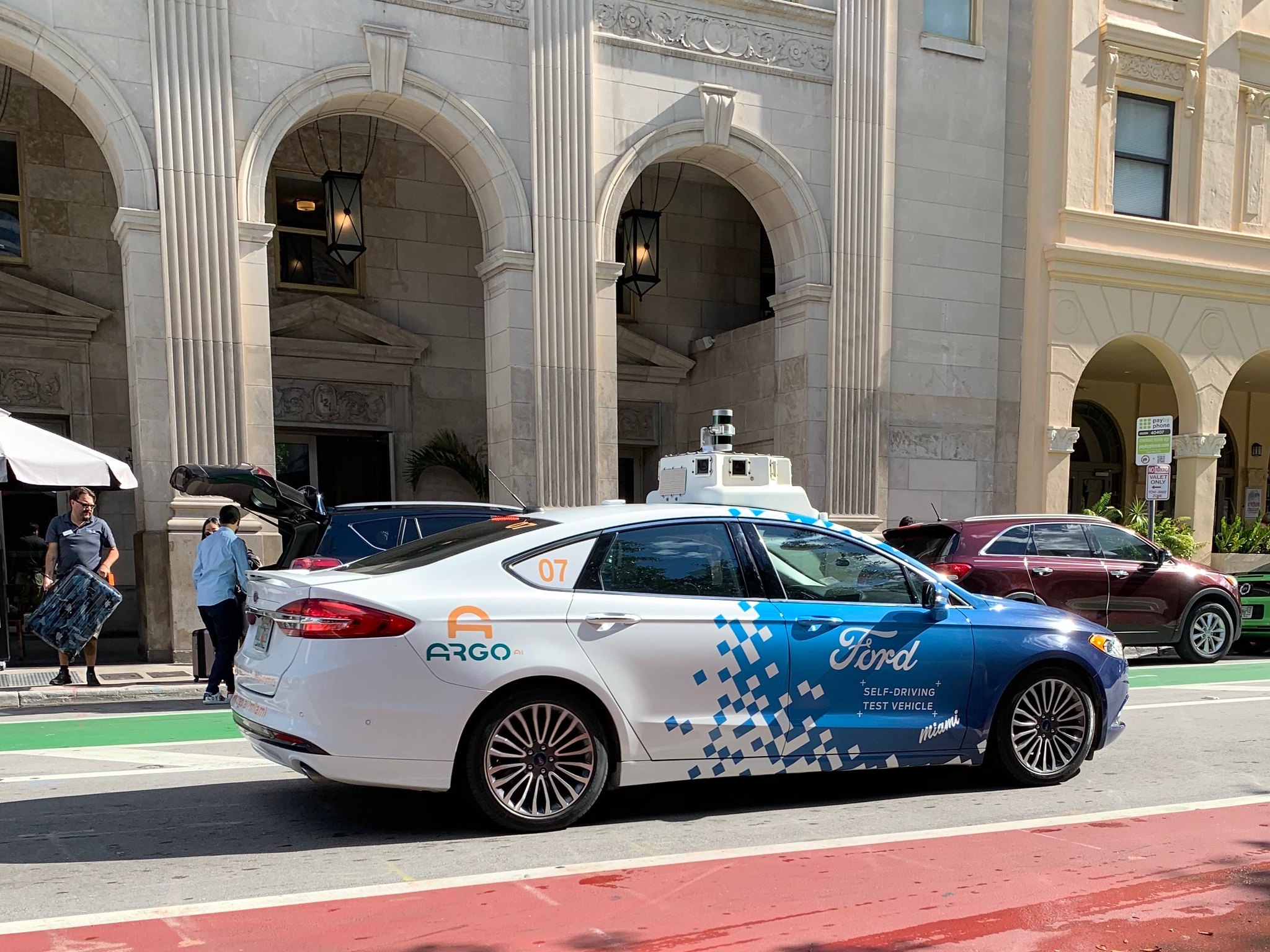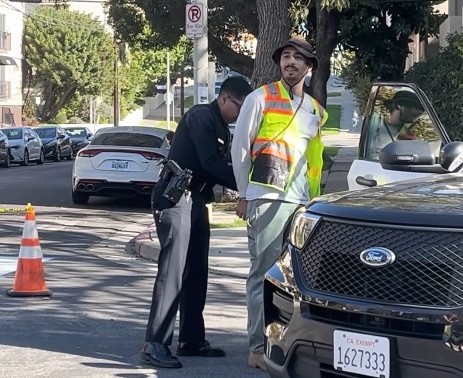The mayor of Philadelphia wants the City of Brotherly Love to be more affectionate towards walkers, cyclists and transit users, but he's facing voters' true first love: a car culture so strong that residents won't even move their vehicles so that the streets can be swept clean, let alone give up a parking lane for a bike lane.
At his second inauguration on Jan. 6, Mayor Jim Kenney announced a slate of transportation priorities, including 40 miles of new protected bike lanes and a comprehensive redesign of the city's bus network. But some local experts feel they've heard Kenney's promises before.
"He promised us 30 miles of protected bike lanes four years ago, and we wound up with around six," said Dena Driscoll, co-chair of 5th Square, a local urbanist political action committee. "So yes, we're all excited for him to build 40 miles of protected bike lanes now — if it can actually happen.”
And advocates are just as excited about Kenney's proposed bus system overhaul, which stems from a comprehensive review of the network that Kenney solicited from transit superstar Jarrett Walker in 2018.
Kenney's promises are vast — but so are the challenges he'll face. Let's review:
A fractured transportation landscape
The main challenge facing the Kenney administration is a fractured government in Philadelphia whose very structure makes true change difficult — especially when it comes to transportation. The city's Public Works Department, for example, includes divisions for sanitation and transportation — and the transportation sector is much smaller.
Philadelphia is also part of the area's regional transportation network, SEPTA, whose board answers to a network of suburban councils, and not just to the city itself. Additionally, the city's parking authority is controlled by the state Assembly, and is further forced to contend with a state vehicle code that requires motor vehicles to park within 12 inches of the curb.
"It makes it almost impossible to do things like build parking-protected bike lanes," said Sarah Clark Stewart, executive director of the Philadelphia Bike Coalition. "It’s very difficult for big idea policies to cut through the noise with one unified mission and vision."
Take bike lanes: Kenney's promises encountered an additional structural roadblock when council members called upon a little-known feature of the city's complete streets law, which effectively requires a new Council ordinance for the construction or modification of each individual bike lane. That block-level control allowed the Council to halt new lanes more often than build them, Driscoll said.
"Basically, they gave themselves a bigger say in where our bike lanes go than even our planners and our engineers," she said.
But Driscoll also resists the narrative that Kenney's best intentions were simply stonewalled by a commandeering council.
"Even when Mayor Kenney didn’t have to have [the Council's] approval, he was still very focused on the idea that they had to have full consensus to change our streets. But we all know that no meaningful change is going to get consensus.”
No room for change
It's even harder to achieve consensus when no one in your city can seem to agree on what a bike- and pedestrian-friendly city looks like. The city's tidy Quaker urban planning gave Philly a dense downtown core of narrow streets that were literally built to be navigated on foot.
But that's not how modern Philadelphians are using them.
"Philadelphia should be the most bikeable and walkable city in the U.S.," said Philadelphia 3.0's Jon Geeting. "But somehow, we've still managed to devote all our space to cars."
Yes, Philadelphia's streets are narrow, but many roadways in the historic core still include two lanes for car travel and a third lane for storage along the curb. So it's not like there no room for bikes — it's just that car owners don't see it that way.
"Some of our major streets have 26 feet between the curbs — and that means we have some difficult trade-offs,” said Chris Puchalsky of the city's Office of Transportation, Infrastructure, and Sustainability.
And trading a parking lane for a bike lane isn't an exchange Philadelphians seem to be willing to make, especially since a portion of the city's parking revenues go to the city's notoriously underfunded public schools. Even a street-sweeping initiative championed by Kenney faced resident opposition — apparently because citizens objected to having to move their parked cars to accommodate sanitation vehicles, even for just a few hours a month.
But Geeting hopes that Kenney's plans to revive the cleaning initiative will be the spark his neighbors need to see that being a little less car-reliant won't kill them.
"My hope is that it will at least open up a conversation about how important it really is to have your car parked right outside your house 365 days a year," he said. "You go to public meetings where people line up at the mic to say what a crisis that is. That's not a crisis."
Some might argue the real crisis is Philadelphia's rising level of pedestrian fatalities. Those shot up 17 percent last year — and making parking and driving the cheap, convenient way to get around probably isn't helping.
'A city where people drive to the corner store'
Living within spitting distance of your publicly subsidized parking spot isn't a fundamental human right but most Americans — and seemingly most Philadelphians — don't see it that way.
"The president of our city council once said, 'We are the kind of city that drives to the corner store,'" Driscoll said. "But that’s just the idea of what Philadelphians are like. The truth is we have a really diverse city and a really poor city that relies on things like public transit, walking and biking."
And though it's troubling that one of the highest-ranking city electeds perceives his constituency as a bunch of auto-addicts, that doesn't mean that there isn't room for change. Many advocates are optimistic about the mayor's promised transit overhaul because so many people rely on transit — 26.2 percent of Philadelphians commute by bus or train, a ridership rate just shy of the top 10 cities in the US.
Kenney could get Philly's ridership into the elite class simply by tinkering with a punishingly expensive fare system that charges full fare for all riders over 4 years old, and levies an additional dollar on transfers for riders who can't afford to live on the city's most frequently used lines.
That's where change will happen — from transit on up.
“There is a strong demand for a less car-dependent street and transit system," Clark Stewart said. "We just have to keep plowing ahead.”






